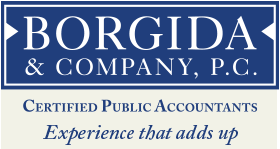The New Year’s celebrations are over.
The New Year’s Resolutions are starting. We’ll see how long they last.
Many people feel income taxes are going up. I’m confident they are for the higher income earners.
Now it’s time to start your 2013 tax planning. Here are 4 easy ways to start:
1) Set up a Folder for Your Documents
It doesn’t matter if it is a physical folder or an electronic folder. Just have a file set up and put in there, all of the key documents you will need including:
*Pay Stubs
*Estimated Tax Payment Vouchers
*Charitable Donations
*Property Taxes
*Medical Expenses
*Unreimbursed Employee Expenses
*Health Savings Account Activity
2) Monitor Your Withholding
You will have a better idea of your 2013 tax obligation after you have completed your 2012 return. This will be the starting point for possibly adjusting your withholding. Ideally, you don’t want to get a huge refund. You also don’t want to have a big tax obligation next spring.
3) Review Your Estimated Tax Payments
Employees have federal and state income tax withheld from their paycheck. Many other sources of income don’t have withholding. This would include:
*Self-Employment Income
*Partnership Income
*Interest
*Dividends
*Capital Gains
Estimated taxes are due on January, April, June and September 15th. Complete IRS Form 1040-ES for the federal estimated tax payment. Connecticut taxpayers need to complete Form CT-1040-ES.
Failure to have enough income taxes paid either through withholding and/or estimated tax payments will result in an underpayment penalty. To avoid this penalty, taxpayers whose prior year adjusted gross income was under $150,000 need to have paid in 100% of the prior year tax. For taxpayers whose prior year adjusted gross income is over $150,000 they need to have paid in 110% of the prior year tax.
4) Review Your Required Minimum Distribution
Taxpayers over age 70 1/2 must take their required minimum distribution (“RMD”) from their IRA’s and 401(k) plans. This must be done by April 1st of the year following the year you turn 70 1/2. The failure to take the RMD results in a penalty of 50% of the amount that should have been taken. That’s not a misprint; it’s a 50% penalty.
Take these 4 easy steps to start your tax planning and save money.
If you need assistance with your tax planning please give us a call.
Photo from Creative Commons.


